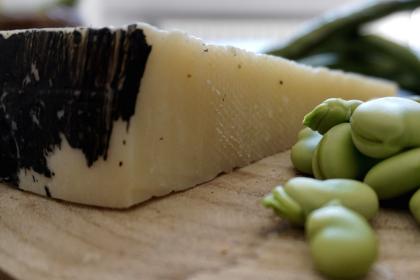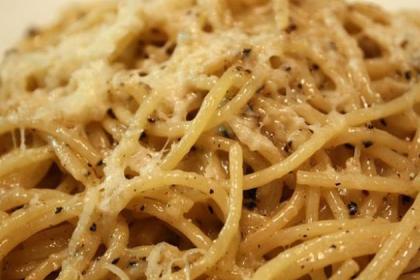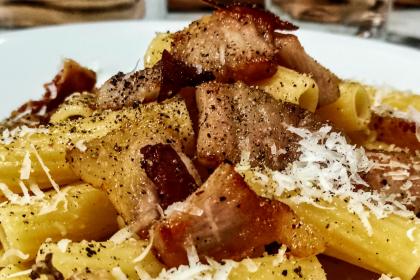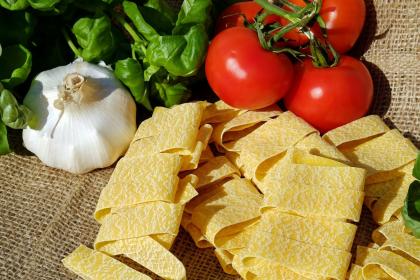
The jolly invasion of the peasant kitchen
Barbarians or “stutterers” (according to the etymology of the word), and therefore unable to speak properly, were in ancient Greece all foreigners. In its obvious derogatory meaning, the word had wide fortune in the centuries to follow, especially when the Roman Empire was faced with the invasions of “barbarian” peoples pressing at its borders: but it was precisely the meeting and fusion of different cultures that gave birth to modern Europe. Gastronomic culture is also the result of the most varied influences and contaminations, and in Rome it reflects the many and contrasting spirits that populate the city, from the Jewish culinary tradition to the “butcher’s” tradition founded on the scraps and offal of the so-called quinto quarto. What gave it recognition, however, were mainly the simple recipes of the “burina” or peasant kitchen, where “burino” is a word in the Roman dialect that usually suggests a certain lack of urbanity and elegance. But when it comes to food, it is a different story.
The fortune of the burini
Villan, coarse, lout: “burino” is a word that is easy to come across in Belli’s sonnets but which has been attested in Rome since the 17th century, when it was used by the poet Giuseppe Berneri to ironically describe the gigantic figure of the Moor in the fountain in Piazza Navona. It probably derives from the Latin buris or bura, i.e. bure, plow rudder, and was originally the name given to those who were not born and did not live in the city, i.e. the peasants and shepherds of the Roman countryside who often came from Romagna or other regions of the Papal States – not barbarians, but nevertheless somehow “foreigners”. The fact is that it was precisely the products of the countryside (vegetables, some meat, some cheese), prepared according to recipes handed down for generations, that gave shape to masterpieces of taste and flavor, such as Amatriciana or Gricia pasta dishes. Hence, already in its name, pasta alla burina is intended as a tribute to what has become the Roman culinary tradition and to its simple and genuine ingredients, which have conquered even the most refined palates.
A peasant Sunday lunch
Pecorino cheese, sausage, peas and fresh tomatoes are the main ingredients of this dish that has become a classic of Roman cuisine. “Burina”, in the sense of basic and genuine, and therefore inevitably delicious: a rich and satisfying pasta, which became popular from the second half of the 20th century and was born by elaborating old local traditions. It is very simple to prepare and cheap, and therefore perfect for Sunday lunch with the family or for a dinner with friends, today as in the past. Just as with other family recipes, the recipe for pasta alla burina has numerous variations: some add artichokes, others add mushrooms or pancetta, but in every version the essential element is pecorino cheese, rigorously Roman, intense and aromatic, which gives an extra kick to each preparation. Even on the pasta format to be used, a certain freedom is allowed: to obtain an optimal result, however, the recipe books divide equally between penne rigate and fettuccine all’uovo, which used to be home-made, of course.
The recipe
Ingredients - Serves 4
• 400 gr short pasta (or fettuccine)
• 2 sausages
• 500 g cherry tomatoes
• 150 g fresh or frozen peas
• 1 carrot, half onion, one clove of garlic
• half a glass of white wine
• parsley
• grated pecorino romano cheese
• extra virgin olive oil
Directions
Brown the sausages, cased and shredded, in a large frying pan in which you have sautéed the finely chopped herbs (onion, carrot, and garlic clove) and deglaze them with white wine. Add the chopped tomatoes and after a few minutes the peas, letting them cook until tender. Meanwhile, cook the pasta al dente in plenty of salted water and as soon as it is ready, toss it with the sauce. Finally sprinkle with a generous handful of pecorino romano cheese and sprinkle with chopped parsley.
Photo turismoroma
Pecorino Romano, the extra tasty secret of Roman Cuisine

Seven traditional dishes for a real Roman lunch

The Gricia

Traditional cuisine












































